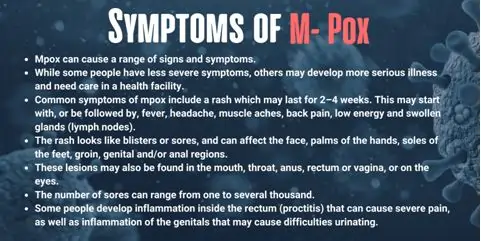Mpox Clade Ia Evolves for Human-to-Human Spread
Why in the news?
A new study shows that mpox clade Ia has evolved to transmit between humans, raising concerns over its spread and response to antiviral treatments and vaccines.
Overview of Recent Study on Mpox Evolution:
- The WHO declared mpox a public health emergency in 2022-2023.
- Mpox has been a concern since the eradication of smallpox in 1980, with ongoing surveillance, especially in West and Central Africa.
- A preprint study uploaded in October 2023 indicates that mpox clade Ia may have evolved to spread from human to human, challenging previous assumptions.
Research Findings and Role of APOBEC:
- Scientists observed a surge in mutations in clade Ia viruses, linked to the activity of the APOBEC protein family.
- APOBEC proteins, part of the immune system, introduce random mutations in foreign DNA, which can affect viral evolution.
- The study showed that 63% of the mutations in clade Ia samples were consistent with APOBEC-induced changes, suggesting human-to-human transmission.
- Previously, clade Ia was only known to cause sporadic infections, primarily through animal-to-human transmission.
About Mpox (Monkeypox):
- Viral Infection: Caused by the monkeypox virus (MPXV), first reported in humans in 1970, primarily in African regions.
- Types:
- Clade I: Originated in Central Africa.
- Clade II: Originated in West Africa.
- Symptoms:
- Fever, headache, muscle aches, back pain, low energy, swollen lymph nodes, pox-like rashes lasting 2-3 weeks.
- Transmission:
- Zoonotic transmission (animals to humans).
- Human-to-human transmission (through direct contact with body fluids or sexual contact).
Why Mpox is a Public Health Emergency:
- Discovery of New Variant (Clade Ib):
- Clade Ib spreads more through sexual contact, unlike earlier strains.
- Exponential Increase in Cases:
- Over 99,000 cases and 208 deaths reported globally since 2022.
- The virus is mutating, making it harder to control.
- New Geographic Spread:
- New cases of Clade Ib in countries like Burundi, Kenya, Rwanda, and Uganda, where it was previously unknown.




